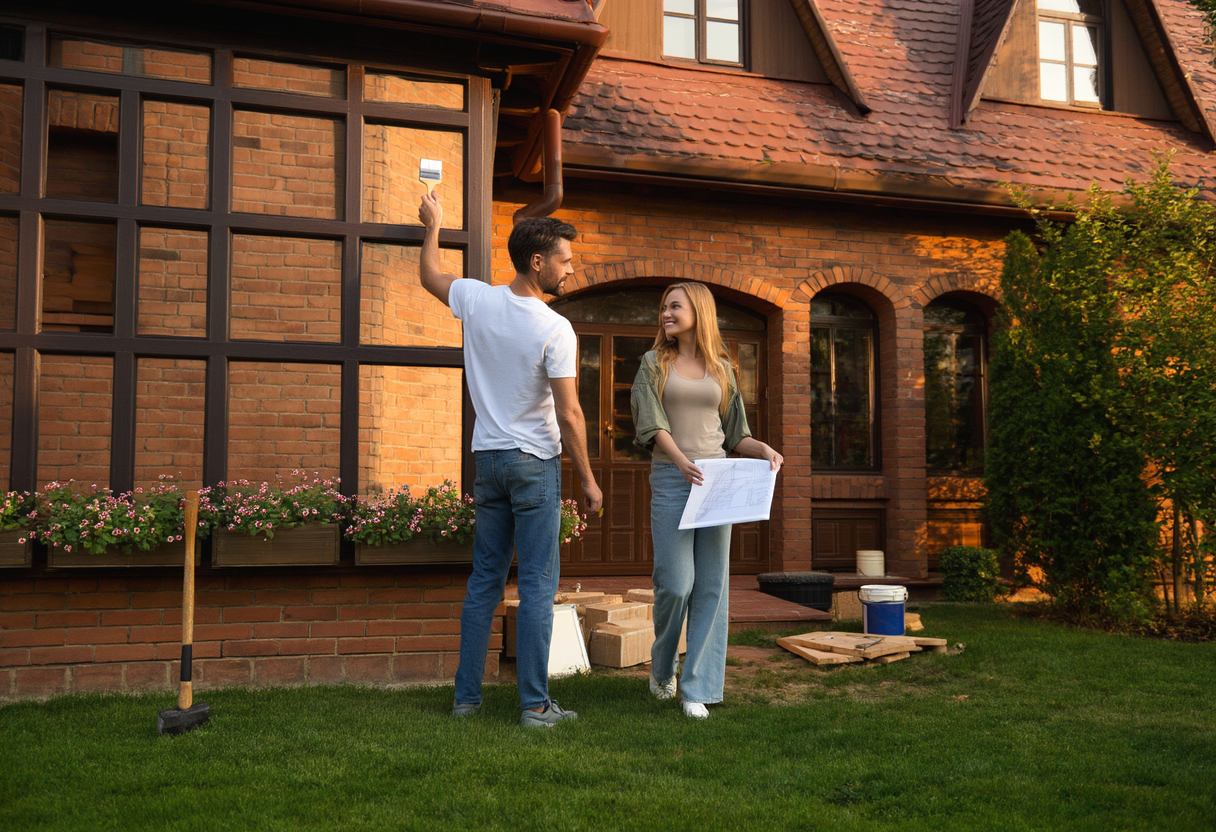Redefining Charm: DIY Tips for Your Historic Home Remodel
Undertaking a historic home remodel as a DIY project can be both rewarding and challenging. This article provides essential tips and techniques for homeowners looking to modernize while preserving charm. From choosing the right tools to understanding architectural nuances, equip yourself for a successful renovation journey filled with creativity and respect for history.
Why Choose a DIY Approach for Historic Home Remodel?
Opting for a DIY approach when planning a historic home remodel can embody a profound connection to the property. This personalized twist allows homeowners to infuse their creativity while maintaining the building's unique character. Not only does it foster a sense of ownership, but it also often provides a cost-effective solution to renovation challenges. However, it’s important for DIY enthusiasts to prepare thoroughly before diving into projects. Understanding the historical significance of the home is crucial to avoid unintentional damage. Balancing personal style with preservation mandates leads to a rewarding journey, enhancing both the space and the owner's appreciation for its history. Though the DIY approach may come with obstacles, the end result can be a truly personalized historic home remodel.
Key Preparation Steps for Successful DIY Historic Home Remodels
Before commencing any work on a historic home remodel, homeowners should focus on preparation. Conducting comprehensive research is the first step; this includes studying the architectural style and timeline of the home. Creating a detailed project plan helps set realistic expectations, incorporating timelines and budget considerations. Safety is paramount—obtaining permits and understanding local regulations ensures compliance with preservation guidelines. Additionally, assembling the right tools and materials beforehand can prevent unnecessary delays and facilitate a smoother workflow. Homeowners should not hesitate to reach out to experts for advice on specific projects, including plumbing or electrical work. A thoughtful approach to preparation sets the stage for a successful historic home remodel.
Creative DIY Techniques to Enhance Authenticity
There are numerous creative techniques that DIY enthusiasts can employ to enhance authenticity in their historic home remodels. For instance, replicating original moldings with a router can restore detail to door frames and windows that may have been lost over time. Another valuable skill involves learning how to glaze windows using traditional methods to maintain original designs while improving energy efficiency. DIY enthusiasts could also consider repainting according to period-appropriate colors using guidance from historical palettes. Utilizing reclaimed materials, such as vintage doors or windows, not only fortifies the space's character but also promotes sustainability. Each of these methods reflects the creativity and dedication of homeowners engaging in a historic home remodel.
Understanding the Architectural Details of Historic Homes
An essential element of a successful historic home remodel is understanding the unique architectural details that characterize the property. Homeowners often benefit from architectural guides that explore the intricate designs commonly found within historic surroundings. Features such as crown moldings, wainscoting, and decorative ceilings should be delicately examined and restored. During the remodel, any modifications should respect these details, ensuring they enhance rather than detract from the historical narrative. Paying close attention to these architectural nuances helps maintain the home's integrity while embracing modernization. Homeowners can navigate the complexities of these details with skilled craftsmanship, breathing new life into their historic home remodel.
DIY Tools You Can't Live Without When Remodeling
Equipping yourself with the right tools is vital when tackling a historic home remodel. Essential tools may include a high-quality saw for precise cuts, a level for ensuring structural soundness, and various painting supplies for achieving smooth finishes. Additionally, safety gear, such as gloves and dust masks, protects against harm while working. Homeowners may also find multi-tools invaluable for performing diverse tasks, reducing the need for numerous individual items. Researching tools and their specific applications ensures more efficient work, providing a satisfying DIY experience. Ultimately, investing in good-quality tools saves time and yields better results in your historic home remodel.
Final Reflections on Your DIY Historic Home Remodel Journey
Completing a DIY historic home remodel is a journey filled with challenges and triumphs. Reflecting on this experience fosters deeper appreciation for the craftsmanship involved in home preservation. Throughout the project, each choice made carries the weight of history, serving to honor the past while crafting a unique living space. From learning new skills to overcoming obstacles, homeowners can gain profound satisfaction from every aspect of their remodel. Ultimately, the process culminates in a beautifully transformed home that harmonizes history with modern living. Such emotional and physical investments become an integral part of the story that continues to unfold within the walls of a historic property.
